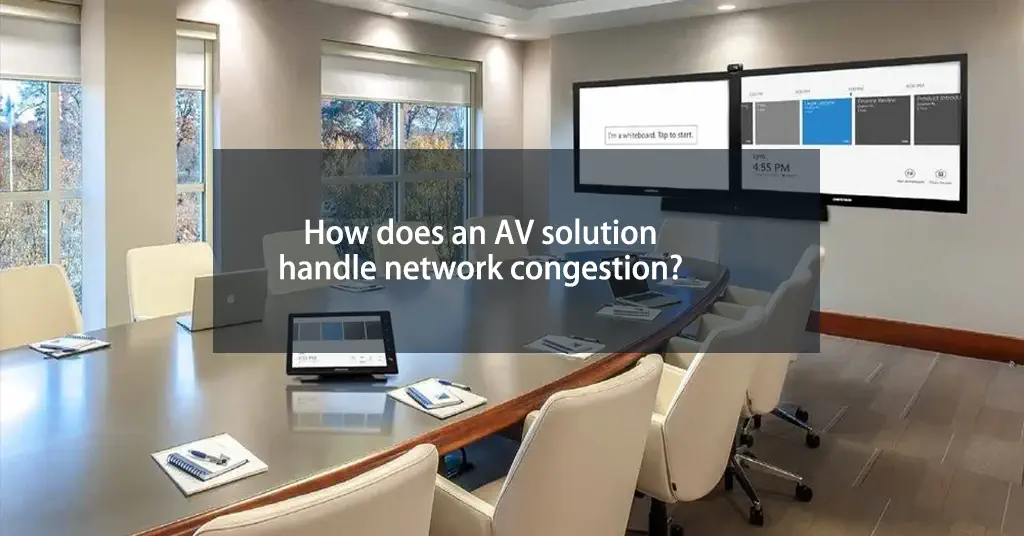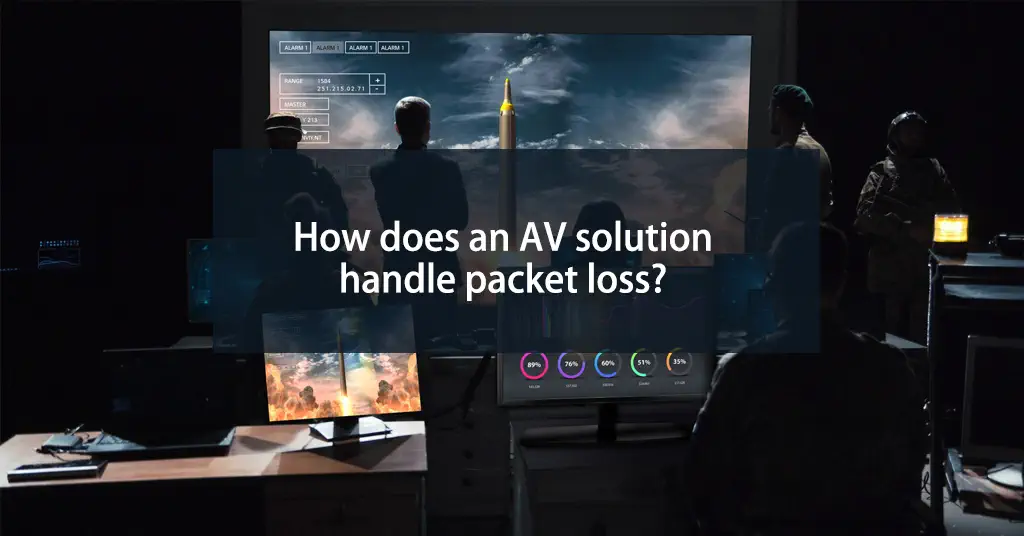How does the AV solution handle network congestion and packet loss?
Table of Contents

As the world becomes increasingly digitized, our dependence on digital communication and information sharing has grown rapidly. With the growing demand for reliable and secure data transfer, the need for an efficient Audio/Video (AV) solution has become paramount. However, network congestion and packet loss can pose significant challenges to the smooth functioning of an AV solution. In this article, we will discuss how an AV solution handles network congestion and packet loss, and how these challenges can be addressed effectively.
What is an AV solution?
An AV solution is a software application that allows users to conduct audio and video conferencing over the internet. It enables real-time communication and collaboration between individuals and groups located in different parts of the world. The AV solution typically includes features such as video and audio streaming, screen sharing, chat, and file sharing.
How does an AV solution handle network congestion?

Network congestion occurs when the volume of data traffic on a network exceeds its capacity to process it efficiently. This can result in slow data transfer rates, delays, and dropped connections. In an AV solution, network congestion can cause poor video quality, audio dropouts, and other performance issues.
To address network congestion, AV solutions use a technique called adaptive bitrate (ABR) streaming. ABR streaming allows the AV solution to adjust the quality of the video stream according to the available bandwidth. This means that if the network is congested, the AV solution can reduce the quality of the video stream to maintain a stable connection. Conversely, if the network capacity increases, the AV solution can increase the quality of the video stream accordingly.
In addition to ABR streaming, an AV solution can also use other techniques such as data compression, content delivery networks (CDNs), and quality of service (QoS) to mitigate network congestion.
How does an AV solution handle packet loss?

Packet loss occurs when data packets are lost during transmission due to network congestion or other factors such as latency, jitter, or equipment failure. In an AV solution, packet loss can cause video stuttering, audio dropouts, and other performance issues.
To address packet loss, an AV solution uses a technique called forward error correction (FEC). FEC works by adding extra data to each packet to enable the receiver to reconstruct any lost packets. This means that even if some packets are lost during transmission, the receiver can still receive the complete data stream without any disruption.
In addition to FEC, an AV solution can also use other techniques such as packet retransmission and congestion control algorithms to mitigate packet loss.
Conclusion
In conclusion, an AV solution is an essential tool for real-time communication and collaboration in today’s digital world. However, network congestion and packet loss can pose significant challenges to the smooth functioning of an AV solution. To address these challenges, an AV solution uses techniques such as adaptive bitrate streaming, forward error correction, packet retransmission, and congestion control algorithms. By using these techniques, an AV solution can provide reliable and high-quality audio and video conferencing even in the face of network congestion and packet loss.
Others also read the following article
Want to know more about the Audio Visual Solutions?
